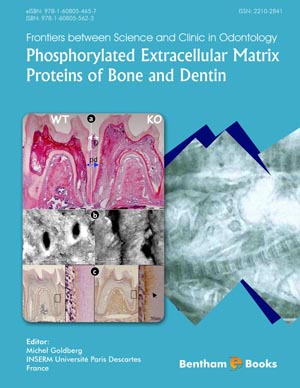Abstract
Regulation of phosphorylation of DPP and DMP1 may provide a means of fine-tuning biomineralization processes and their related signaling events. Together with the established literature, the recent studies from our group confirm that actual phosphorylation machinery is present in cells which do not normally mineralize their matrix, and is not restricted to those cells classically associated with the generation of mineral networks. Establishing how, this regulation over mineralization is achieved will constitute a fruitful area for further investigation. In particular, further experiments are necessary to characterize site-specific phosphorylation events. It will also be of interest to compare the levels and specificity of protein phosphorylation in different cell types, as well as whether these specific phosphorylation events then provide points of control over DPP and DMP1-mediated signaling. Uncovering difference in post-translational modification between cells that mineralize their matrix compared to cells that do not mineralize their matrix is also expected to provide critical information about the uniqueness of cell processes designed for mineralized tissues. These studies would not only provide valuable information on the etiology of phosphorylation in aberrant mineralization events, but also broaden basic knowledge of how cells regulate their cellular processes.
Keywords: DPP, DMP1, phosphorylation, cell signaling processes, mineralization.






















